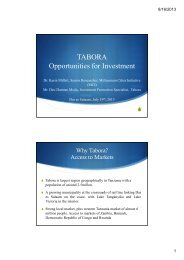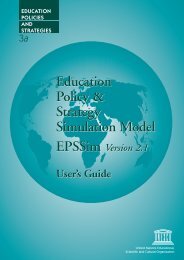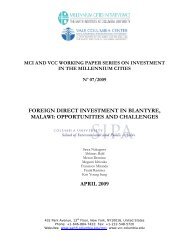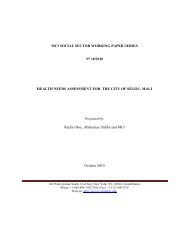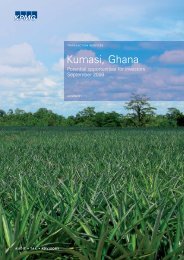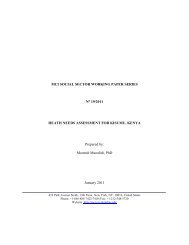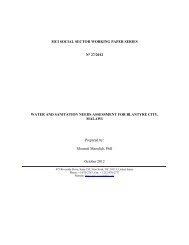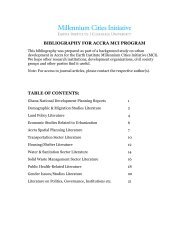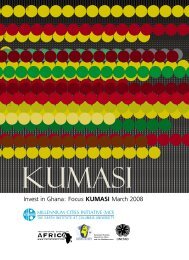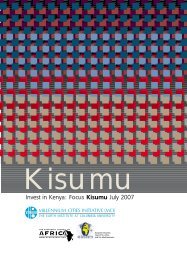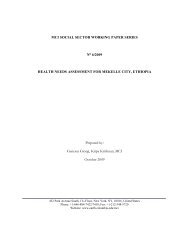Mekelle, Ethiopia - Millennium Cities Initiative - Columbia University
Mekelle, Ethiopia - Millennium Cities Initiative - Columbia University
Mekelle, Ethiopia - Millennium Cities Initiative - Columbia University
Create successful ePaper yourself
Turn your PDF publications into a flip-book with our unique Google optimized e-Paper software.
42 <strong>Mekelle</strong>, <strong>Ethiopia</strong>: Potential Opportunities for Investment<br />
Case study: Sheba Tannery<br />
Opportunity<br />
• Started in 2003, Sheba is currently operating at 50 percent capacity, processing<br />
about 3,000 skins per day (the maximum capacity is 6,000 sheep and goat skins<br />
and 700 cow hides per day). Sheba exports semi -finished and finished leather to<br />
Europe and Asia. Capital equipment and specialty chemicals imported for leather<br />
processing and leather goods production are duty free. 1<br />
• At present the tannery does not produce finished products but plans to begin<br />
producing about 2,000 shoes per day starting from 2010. There are also plans for<br />
gloves production. While part of the shoes will be sold in the local market, the<br />
gloves in particular will almost exclusively be export items.<br />
Challenges<br />
• In the first years of operation the tannery faced difficulties connected with the<br />
lack of technical skills among its workforce. The low quality of raw hides and skins<br />
has proved challenging.<br />
Meeting the challenges<br />
• The company is improving quality issues through extensive test sampling from<br />
different suppliers. The workforce has responded well to training.<br />
Leather production value chain, 2008<br />
Raw leather Processed leather Leather goods<br />
Price US$0.4–0.6 per sq ft US$2.5 per sq ft Pair of shoes:<br />
USD20-22 per pair<br />
3<br />
(~USD7 per square foot)<br />
Export value n/a ~USD90 million Shoes: USD3.2 million<br />
In 2008 the <strong>Ethiopia</strong>n<br />
Government introduced a<br />
100 percent export duty<br />
for raw leather to prohibit<br />
the export of raw hides<br />
and skins and stimulate<br />
value-adding activity in<br />
the leather industry.<br />
Source: 1. KPMG in <strong>Ethiopia</strong> interview programme, 2009<br />
2. <strong>Columbia</strong> <strong>University</strong> – Investment Promotion in <strong>Mekelle</strong>, <strong>Ethiopia</strong>, October 2009<br />
Note: 3. Based on three square feet of leather required for production of one pair of shoes<br />
Analysis of the value chain indicates that the export of<br />
processed leather or finished leather and leather goods<br />
yields a higher price than raw leather.<br />
© 2010 KPMG International Cooperative (“KPMG International”), a Swiss entity. Member firms of the KPMG network of independent firms are affiliated with KPMG International. KPMG<br />
International provides no client services. No member firm has any authority to obligate or bind KPMG International or any other member firm vis-à-vis third parties, nor does KPMG<br />
International have any such authority to obligate or bind any member firm. All rights reserved.



